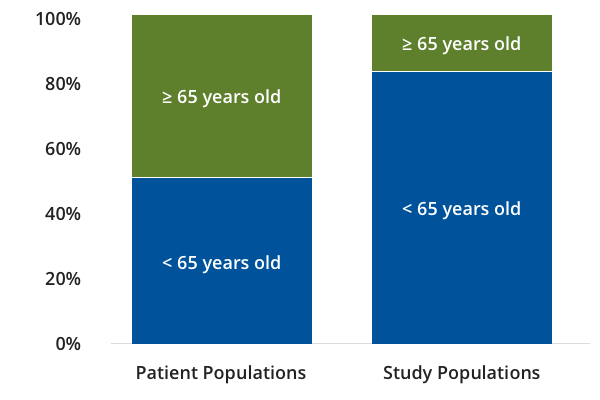
The 5Ts Framework helps research teams identify the appropriate target population and avoid exclusions, build teams with aging expertise, anticipate additional time and resources needed, follow practical tips for accommodating age-related limitations, and use tools that measure outcomes important to older adults.

Older adults make up a large percentage of patient populations, but a much smaller percentage of study populations.
The percentage of older adults included in research studies of specific conditions is often much lower than the prevalence of those conditions in older adults. Examples include studies of hypertension (19% vs. 40%), diabetes (10% vs. 40%), and cancer (26% vs. 56%).
The underrepresentation of older adults in research studies leaves us uncertain about how best to care for older patients.

Benefits of including older adults in research:
- Greater generalizability of study findings
- Older adults are enthusiastic about participating in research
- Smaller sample sizes or shorter study lengths may be possible
- Comply with the National Institutes of Health (NIH) Inclusion Across the Lifespan Policy
The 5Ts Framework
(Hover over a T to learn more)
Supported By:





